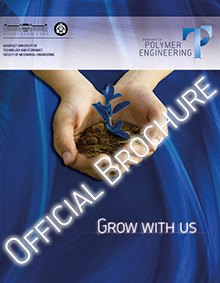Drive gear systems for high precision and demanding applications with integrated advanced polymeric materials

Project ID:
2020-1.2.3-EUREKA-2021-00010
Supported by:
European Commission
Term:
1 September 2022 - 31 August 2025
Supervisor (BME):
Dr. József Gábor Kovács
Dr. András Suplicz
Dr. András Suplicz
Consortium partners (BME):
Podkrižnik d.o.o. (Slovenia)
X-Plast Kft. (Magyar)
X-Plast Kft. (Magyar)
Project summary
https://eureka.podkriznik.si/
Project results
Section 1
1 September 2022 - 31 August 2023
The literature review task defined in milestone 1 was prepared jointly by the BME Polymer Technology Department and X-Plast colleagues. The professional experience of the development team with numerous international patents greatly contributes to the achievement of the objectives of the milestone, so by focusing on the patent research of the selected gear type in the early stages of the work, a detailed mapping of the current state of science relevant to the topic was possible. This facilitated the accurate and efficient execution of the relevant international literature review. In addition, various polymer composite materials were developed, which we can use in injection molding and 3D printing processes for the production of gear parts. We have also prepared hybrid composites containing high-performance carbon fiber and boron nitride with different compositions, which combine the advantageous properties of the individual additives (high strength, good thermal conductivity, wear resistance, etc.). In the case of the raw material developed for 3D printing, we also developed an extrusion production method to maximize the length of the reinforcing fibers, thus improving the efficiency of the composites. In the work phase, we also prepared the tasks for the next milestone, examining possible outcomes and obstacles.
Section 2
1 September 2023 - 31 August 2024
In the 2nd phase, components were selected using metal-to-plastic and lightweight design principles. The possibility of using an all-polymer or metal-polymer hybrid design was also investigated for these components. Meeting several often conflicting requirements in product design is a significant challenge. The main load directions were identified during the topological optimization, and the preliminary rib structure was determined. Prototypes made of different materials, 3D printed, and test bench measurements on these prototypes played a key role in the simulation-assisted development process. In parallel with the measurements, kinematic-dynamic and homogeneous isotropic strength simulations were used to optimize the geometry of the selected outer casing and compared with the test bench results. The measured data was evaluated by further design iterations, considering both the injection molding and the machining manufacturing technology limitations for the central metal core. In this step, so-called coupled finite element simulations were run taking into account the fiber orientation derived from the Moldflow simulation results of the Department of Polymer Engineering of the Budapest University of Technology and Economics. During this step, the developed geometric variables were parameterized with an anisotropic material model with different properties in each direction as a function of the fiber orientation. Using this state-of-the-art method, it is possible to map the fabricated parts in a virtual development environment (like a digital twin) and thus investigate the behavior of the part according to the intended loads. In addition to the development of the geometry, the potential and limitations of the application of different specific fabrication techniques were investigated. We analyzed processes and their combinations that are not yet available on the market for mass production, such as T-RTM (Thermoplastic Resin Transfer Molding) technology, the embedding o
Section 3
1 September 2024 - 31 August 2025
Project-related publications
- Hajagos Sz., Kovács J. G.: Polymer-based bipolar plates for fuel cells: design, simulation, and manufacturing. Periodica Polytechnica-Mechanical Engineering, 69, 40-45 (2025) 10.3311/PPme.38589 IF=1.3 Q3
- Horváth Sz., Kovács J. G.: Real‐time product weight estimation based on internal pressure monitoring in injection molding. Polymer Engineering and Science, 65, 1693-1701 (2025) 10.1002/pen.27078 IF=3.2 Q2
- Zink B., Szuchács A., Hajagos Sz., Kovács J. G.: Modeling the effect of scale deposition on heat transfer in injection molding. Scientific Reports, 15, 1-9 (2025) 10.1038/s41598-025-98657-x IF=3.8 Q1
- Horváth Sz., Kovács J. G.: Determination of wall thickness effect of in-mold viscosity measurement under non-adiabatic, non-isothermal flow conditions. Express Polymer Letters, 19, 246-257 (2025) 10.3144/expresspolymlett.2025.19 IF=2.7 Q2
- Csapó M., Kovács J. G.: Impact of fiber fragmentation on mechanical performance and environmental footprint of recycled glass fiber-reinforced polyamide composites. Journal of Cleaner Production, 511, 145678/1-145678/14 (2025) 10.1016/j.jclepro.2025.145678 IF=9.8 D1
- Horváth Sz., Kovács J. G.: Effect of processing parameters and wall thickness on the strength of injection molded products. Periodica Polytechnica-Mechanical Engineering, 68, 78-84 (2024) 10.3311/PPme.24068 IF=1.3 Q3
- Párizs R. D., Török D.: How to use prior knowledge for injection molding in industry 4.0. Results in Engineering, 23, 102667/1-102667/21 (2024) https://doi.org/10.1016/j.rineng.2024.102667 IF=6 D1
- Szuchács A., Kovács J. G.: Calculation of the bonding strength of semi-crystalline polymers during overmolding. Polymer Testing, 139, 1-6 (2024) 10.1016/j.polymertesting.2024.108579 IF=5 D1
- Szuchács A., Ageyeva T., Kovács J. G.: Modeling and measuring the bonding strength of overmolded polymer parts. Polymer Testing, 125, 108133/1-108133/15 (2023) 10.1016/j.polymertesting.2023.108133 IF=5 D1
- Párizs R. D., Török D., Ageyeva T., Kovács J. G.: Multiple in-mold sensors for quality and process control in injection molding. Sensors, 23, 1735/1-1735/18 (2023) 10.3390/s23031735 IF=3.4 Q2
© 2014 BME Department of Polymer Engineering - Created by: Dr. Romhány Gábor






